OCZ Agility 3 (240GB) Review
by Anand Lal Shimpi on May 24, 2011 2:53 AM ESTOCZ has been at the forefront of each generation of SandForce SSD release since the debut of the SF-1500 based Vertex Limited Edition. More recently the Vertex 3 was the first client SSD to use SandForce's SF-2281 controller. Many of you have written me asking if the Vertex 3 is worth the additional cost over the Vertex 2. Given that you can pick up a 120GB Vertex 2 for $210 ($180 after rebate), and a 120GB Vertex 3 will set you back $300 flat it's tough to recommend the latter despite the performance improvements. If you don't have a 6Gbps platform (e.g. Intel 6-series, AMD 8-series) the Vertex 2 vs. Vertex 3 decision is a little easier to make, otherwise the newer, faster Vertex 3 is quite tempting.
There's another issue holding users back from the Vertex 3: capacity. The Vertex 3 is available in 120, 240 and 480GB versions, there is no 60GB model. If you're on a budget or like to plan frequent but rational upgrades, the Vertex 3 can be a tough sell.
Enter the Agility 3, OCZ's mainstream SF-2281 drive.
Architecturally the Agility 3 is identical to the Vertex 3. You get the same controller running similar firmware, and as a result post similar peak performance stats (note the use of the word peak):
| OCZ SF-2200 Lineup | ||||||||
| Specs (6Gbps) | Agility 3 | Agility 3 120GB | Vertex 3 120GB | Agility 3 240GB | Vertex 3 240GB | Vertex 3 480GB | ||
| Raw NAND Capacity | 64GB | 128GB | 128GB | 256GB | 256GB | 512GB | ||
| Spare Area | ~6.3% | ~12.7% | ~12.7% | ~12.7% | ~12.7% | ~12.7% | ||
| User Capacity | 55.8GB | 111.8GB | 111.8GB | 223.5GB | 223.5GB | 447.0GB | ||
| RAISE | No | Yes | Yes | Yes | Yes | Yes | ||
| Number of NAND Devices | 8 | 16 | 16 | 16 | 16 | 16 | ||
| Number of die per Device | 1 | 1 | 1 | 2 | 2 | 4 | ||
| NAND Type | ONFI 1.0 | ONFI 1.0 | ONFI 2.0 | ONFI 1.0 | ONFI 2.0 | ONFI 2.0 | ||
| Max Read | Up to 525 MB/s | Up to 525 MB/s | Up to 550MB/s | Up to 525 MB/s | Up to 550MB/s | Up to 530MB/s | ||
| Max Write | Up to 475 MB/s | Up to 500 MB/s | Up to 500MB/s | Up to 500 MB/s | Up to 520MB/s | Up to 450MB/s | ||
| 4KB Random Read | 10K IOPS | 20K IOPS | 20K IOPS | 35K IOPS | 40K IOPS | 50K IOPS | ||
| 4KB Random Write | 50K IOPS | 50K IOPS | 60K IOPS | 45K IOPS | 60K IOPS | 40K IOPS | ||
| MSRP | $134.99 | $229.99 | $249.99 | $419.99 | $499.99 | $1799.99 | ||
| Street Price | ? | ? | $299.99 | ? | $559.99 | $1799.99 | ||
OCZ has started publishing both peak and incompressible write performance data, but only on its product sheets. While peak performance isn't affected, incompressible performance is. Using AS-SSD as a benchmark, OCZ claims the Agility 3 is only able to muster about 200MB/s for peak sequential reads/writes on the 240GB drive - that's less than half the score the Vertex 3 gets in AS-SSD's read test. Our benchmarks, as you'll soon see, confirm the deficit.
If it's not the controller causing this, and it's not the firmware - then it's the NAND. The Agility 3 (and Solid 3) both use asynchronous NAND. What does that mean? Let's find out.
Asynchronous NAND: An ONFi History Lesson
It takes 50µs to read 8KB from a 25nm Intel NAND die. That works out to a staggering 156MB/s, from a single NAND die. Even the old 50nm stuff Intel used in the first X25-M could pull 4KB in 50µs or ~78MB/s. The original X25-M had 10 channels of NAND, giving it the ability to push nearly 800MB/s of data. Of course we never saw such speeds, as it's only one thing to read a few KB of data from a NAND array and dump it into a register. It's another thing entirely to transfer that data over an interface to the host controller.
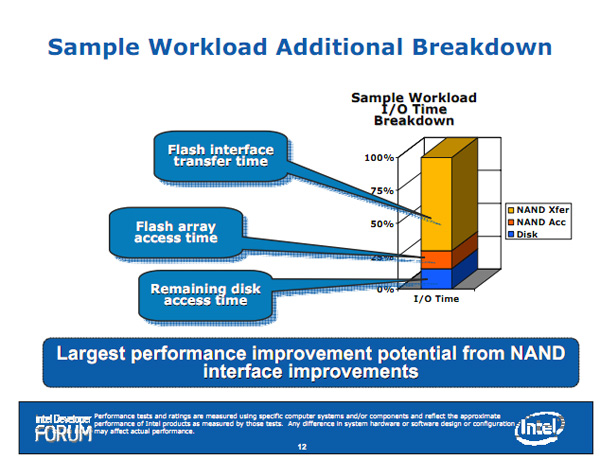
ONFi 1.0 limited NAND performance considerably
Back in 2006 the Open NAND Flash Interface (ONFi) workgroup was formed with the task of defining a standardized interface for NAND Flash. Today, Intel and Micron are the chief supporters of ONFi while Toshiba and Samsung abide by a separate, comparable standard.
As is typically the case, the first standard out of the workgroup featured very limited performance. ONFi 1.0 topped out at 50MB/s, which was clearly the limiting factor in NAND transfer speed (see my example above). The original ONFi spec called for an asynchronous interface, as in one not driven by a clock signal. Most logic these days is synchronous, meaning it operates off of a host clock frequency. Depending on the architecture, all logic within a synchronously clocked system will execute/switch whenever the clock signal goes high, low or both. Asynchronous logic on the other hand looks for a separate signal, similar to a clock, but not widely distributed - more like a simple enable pin. In the asynchronous NAND world this is the role of the RE, WE and CLE (read/write/command-latch enable) signals.
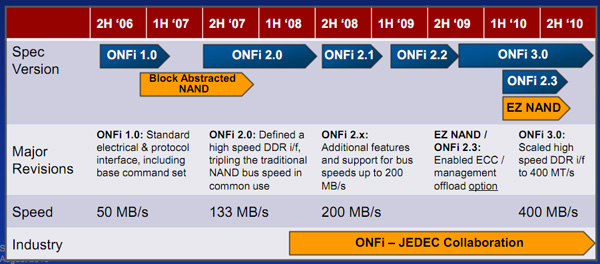
ONFi 2.0 brought the move to source synchronous clocking, as well as double data rate (DDR) operation. Not only were ONFi 2.0 NAND devices tied to a clock frequency, transfers happened on both rising and falling edges of the clock - a similar transition was made in SDRAM over a decade ago. While ONFi 1.0 NAND was good for up to 50MB/s, ONFi 2.0 increased the interface speed to 133MB/s. Present day synchronous ONFi 2.1/2.2 NAND is no longer interface limited as the spec supports 166MB/s and 200MB/s operating modes. Work on ONFi 3.0 is being done now to take the interface up to 400MB/s.
The Agility 3
OCZ sent us a 240GB Agility 3 for review. Inside it looks like this:
You see the SF-2281 controller in its usual spot and to the right of it are eight 25nm Micron NAND devices. Flip the board over and you get another eight.
As always, we look at the part number to tell us what's going on. Micron's part numbers are a little different than Intel's but the key things to pay attention to here are the 128G (128Gbit packages, 16GB per package) and characters 11 and 14. Character 11 here is an F, which corresponds to 2 die per package (2 x 8GB 25nm die in each NAND device) while number 14 is an A, indicating that this is asynchronous NAND. To date I've only encountered 25nm synchronous (represented by the letter B) NAND, but as with any other silicon device there's always a cost savings if you can sacrifice performance.
Equipped with asynchronous NAND, the Agility 3's max performance is limited to 50MB/s per channel compared to 200MB/s per channel in the Vertex 3. The Vertex 3 doesn't come close to saturating its per-channel bandwidth so there's a chance that this change won't make much of a difference. To further tilt things in the Agility 3's favor, remember SandForce's controller throws away around 40% of all of your data thanks to its real time compression/deduplication algorithms - further reducing the NAND bandwidth requirements. When a Vertex 3 pushes 500MB/s that's not actual speed to NAND, it's just how fast the SF controller is completing its tasks. In a typical desktop user workload without too much in the way of incompressible data access, the Agility 3 should perform a lot like a Vertex 3.
Cost Savings and a 60GB Drive
I mentioned the only benefit to asynchronous NAND being a cost savings, if we go by OCZ's MSRPs the savings don't look too great at 120GB: here the Agility 3 is $229.99 vs. $249.99 according to OCZ. Street pricing tells a different (more expensive) story for the Vertex 3. The 120GB drive is more like $299.99, which would mean the Agility 3 (if its MSRP is accurate) would be a full $70 cheaper. Move to 240GB and the gap likely widens.
With the Agility 3, OCZ is also introducing a 60GB model. SandForce's NAND redundancy technology called RAISE, requires an entire NAND die be sacrificed and added to the spare area pool in the event of a NAND failure. At 25nm a single die is 8GB, which would mean a 64GB drive would lose 1/8 of its capacity just due to RAISE. Get rid of another 6.3% of the drive for the standard spare area and you're looking at a pretty high cost per usable gigabyte.

One feature of the SF-2200 firmware however is the ability to disable RAISE. I've never advocated it simply because I like the idea of being able to recover from a failed NAND die in the array, but at the 60GB capacity OCZ felt it was better left turned off (otherwise the drive would have to be sold as a 56GB drive instead).
Entire NAND die failures are pretty rare but it's still possible that one could happen. The 60GB Agility 3, as a result, makes a potential reliability tradeoff for capacity. Personally I'd like to see OCZ offer the option to enable RAISE, although I'm not sure if any user accessible utilities exist that would allow you to do that easily.
The Test
| CPU |
Intel Core i7 965 running at 3.2GHz (Turbo & EIST Disabled) Intel Core i7 2600K running at 3.4GHz (Turbo & EIST Disabled) - for AT SB 2011, AS SSD & ATTO |
| Motherboard: |
Intel DX58SO (Intel X58) Intel H67 Motherboard |
| Chipset: |
Intel X58 + Marvell SATA 6Gbps PCIe Intel H67 |
| Chipset Drivers: |
Intel 9.1.1.1015 + Intel IMSM 8.9 Intel 9.1.1.1015 + Intel RST 10.2 |
| Memory: | Qimonda DDR3-1333 4 x 1GB (7-7-7-20) |
| Video Card: | eVGA GeForce GTX 285 |
| Video Drivers: | NVIDIA ForceWare 190.38 64-bit |
| Desktop Resolution: | 1920 x 1200 |
| OS: | Windows 7 x64 |


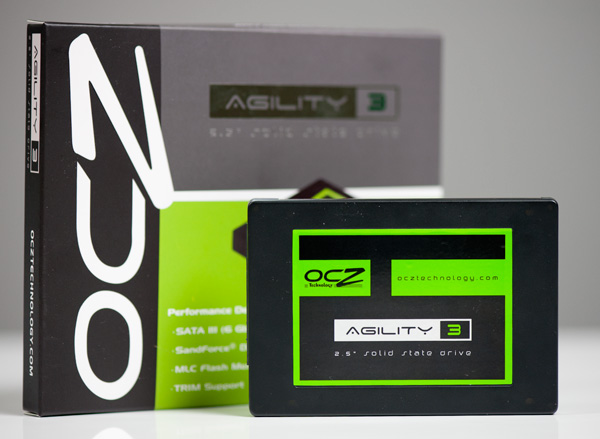
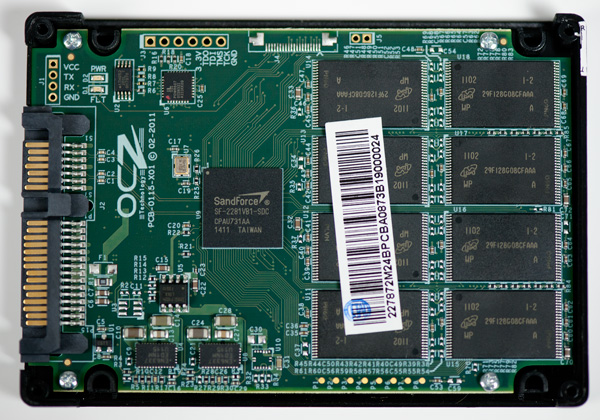
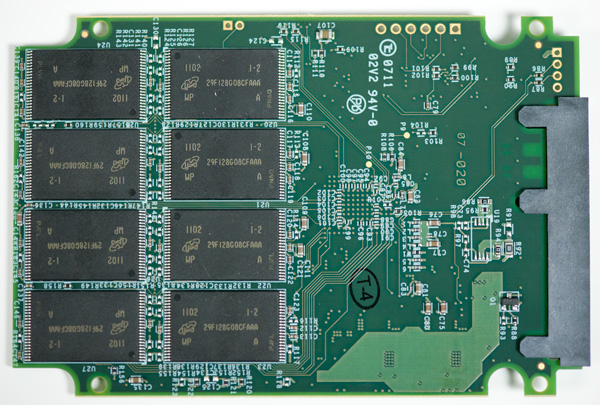
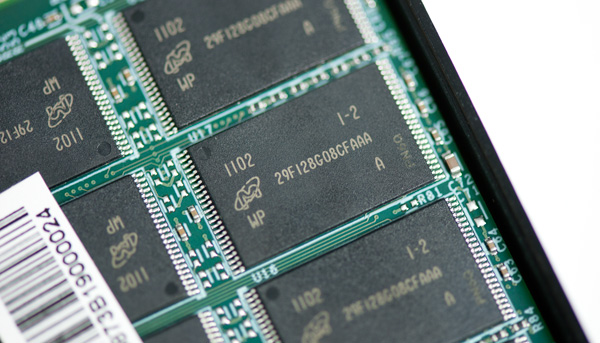








59 Comments
View All Comments
DanNeely - Tuesday, May 24, 2011 - link
The devices shown in the table need to be kept small to keep the tables reasonably sized.Fortunately for you however, the bench section of the site allows you to setup your own comparisons. Anandtech doesn't appear to have ever benched the 240gb Vertex 2, but you can compare eg the 100GB vertex 2 to the 120GB vertex 3:
http://www.anandtech.com/bench/Product/152?vs=350
Oxford Guy - Tuesday, May 24, 2011 - link
The 100 GB is pretty useless for comparison.The chart can certainly be larger, and the 240 GB Vertex 2 makes good sense for this review!
sequoia464 - Tuesday, May 24, 2011 - link
Agreed on the Force 3, be nice to see them reviewed early. Still looking for that review on the Samsung 470's also.Stargrazer - Tuesday, May 24, 2011 - link
It's a shame that most reviewers ("everywhere") still tend to only review the ~256GB versions, skipping the far more affordable (and thus far more realistic options for most users) ~128GB versions. I understand that you don't always have control over which versions you're sent, but there's *still* no review of the 120GB Intel 510, which means that there's also still no real comparisons to the Vertex 3 120GB's competitors.It becomes even more ludicrous when you look around the web for reviews of the Vertex 3 Max IOPS, and everyone is reviewing the 240GB version, concluding that "well, the Max IOPS version is a bit faster in some cases, but generally rather similar to the normal version". Well, *duh*! Given that the Max IOPS version uses 3xnm Flash instead of 2xnm Flash, you'd think that people would be interested in looking closer at the 120GB version, since that's the one where you'd expect the most significant differences. There's a potentially very interesting product out there, and all the "big" reviewers are ignoring it because they're too busy looking at the version that ("regular") people aren't going to buy (to the same degree) anyway!
I understand that companies prefer that reviewers look at the bigger versions because they tend to be "better", but this is getting ridiculous. Have you tried looking for review sites that have reviews of all the "current" ~128GB SSDs? They're not exactly common.
Seeing as there are lots of people out there that are far more interested in ~128GB SSDs than ~256GB SSDs, don't you think it'd be interesting if *someone* would actually show them what the playing field looks like?
You're pretty much the most respected SSD reviewer out there. Is there any chance that you could make a stand and *demand* to also be given ~128GB versions if they want you to review the ~256GB versions? If they don't comply, just buy the ~128GB version for yourself, and refuse to review the ~256GB version.
This lack of ~128GB reviews is getting rather frustrating...
jensend - Tuesday, May 24, 2011 - link
I wholeheartedly agree with this, and would add that other capacities at least down to 64GB need reviews as well. Everybody wants to send the reviewers their top-of-the-line stuff, but most folks in the real world aren't in a position to shell out $300 or more per SSD. I imagine different controllers have different scaling patterns- making a purchase decision based on reviews of high-capacity SSDs seems to me to make no more sense than making a decision about which low-end video card to get based on reviews of the single-PCB dual-GPU monsters.Please, Anand, make a concerted effort to include more lower-capacity SSD reviews.
JasonInofuentes - Tuesday, May 24, 2011 - link
To a certain extent tech sites are beholden to what they receive. When a new product is released, companies do want to show their best foot forward, so they send the best looking product. Add to that the time that it takes to run through a full test suite on each drive and you can imagine what it would take to review every iteration of every drive.Stay tuned though, AT's always trying to do as much as it can. Keep the comments coming.
Stargrazer - Wednesday, May 25, 2011 - link
I fully understand that it is in the manufacturers' best interest to show their products in the best possible light. However, this is not in the best interest of the *consumers* that want to buy ~128GB SSDs. As jensend says, it's quite possible (even probable) that different controllers scale differently, so since "everyone" reviews the ~256GB versions, there's simply no data available for comparisons (aside from the numbers posted by the manufacturers themselves). To make things worse, tests from different sites are often not directly comparable, so even if Site A reviews the ~128GB version of Drive 1, and Site B reviews the ~128GB version of Drive 2, you often can't even compare the test results. This means that it's often really hard to get comparisons of the drives you're interested in.A few weeks ago, I was looking for reviews of the ~128GB versions of the Vertex 3, the Intel 520, and the Crucial C300 (and possibly one more, I can't remember at the moment). I found *one* site that covered all of them. In French. And those were "big name" SSDs. In my eyes, that means that there was *one* review site at the time that had even an *adequate* (it was actually quite good too, even though I needed translation) coverage of ~128GB SSDs. The state of the consumer-focused SSD reviews is simply abysmal (the extreme case must be the sites that review only the 240GB version of the Vertex 3 Max IOPS. That's just... pitiful. In that case, the interesting shift in performance is for the 120GB version).
Yes, that means that I consider AT's coverage of ~128GB SSDs to be *less than adequate* (to be adequate, you need to at least participate!). AT has an absolutely fantastic coverage of the theory behind SSDs, and it is *great* that they covered the 120GB Vertex 3, but without being able to compare it to its competitors, what good is that? All we can do is make educated guesses, and there's not even enough data to make a *good* one.
That's sad, given that far more people seem to be interested in buying ~128GB SSDs than ~256GB SSDs (unless I'm mistaken in that assumption).
And yes, running benchmarks on extra drives obviously takes time, but while SSDs have far more manufacturers out there than for instance the GPU business, sites tend to have no issues with covering lots and lots of different models from each GPU manufacturer. It seems like the workload should pretty much even out when you consider the actual number of products reviewed.
Also, what do you think the reaction would be if review sites suddenly only covered the very high end GPU products out there? Unthinkable, right? So why is it apparently ok for SSDs?
Bah. It's disgusting.
You'd think that at least someone would attempt to have a good coverage of the smaller SSDs, just in order to get the page hits from the people who are interested in them. That should be quite a few people...
Come to think about it, how sad is it that I feel the need to say that it's "great" that a site covers a 120GB model of a drive? Shouldn't that just be "normal"?
Stargrazer - Thursday, May 26, 2011 - link
I found the french article I mentioned: http://www.hardware.fr/articles/830-1/comparatif-s...They compare:
The ~128GB versions of: the OCZ Vertex 3, Crucial M4, Intel 510, Intel 320 (that's the one I forgot), Crucial C300, Corsair F120, Intel X25-M and G.Skill Falcon2,
As well as the 256GB versions of: the OCZ Vertex 3, Crucial M4, Intel 510, Crucial C300,
and the 300GB version of the Intel 320.
That's the only comparison I've seen of current-gen ~128GB SSDs.
Other sites (including AT) just show small parts of the puzzle, if even that.
antcasq - Tuesday, May 24, 2011 - link
What happen to OCZ Onyx 2? It supposed to be cheap (http://www.tomshardware.c...Force-MLC-TRIM,11390.h... however it was almost impossible to find it in the market and it was canceled (http://www.ocztechnology....s/end_of_life/flash_me...Now they want to sell us Agility 3? I rather buy the cheaper Onyx 2 if it really existed at all!
JasonInofuentes - Tuesday, May 24, 2011 - link
You might be interested, then, in the Solid 3 series. This seems to be the successor to the Onyx series, and is targeted at smaller sizes and costs.